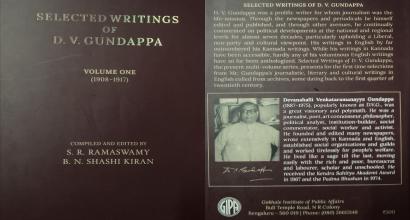Kosambi finally gives his homemade add-salt-to-taste philosophy of how we should view ancient texts:
“Modern life is founded upon science and freedom. That is, modern production rests in the final analysis upon accurate cognition of material reality (science), and recognition of necessity (freedom). A myth may grip us by its imagery, and may indeed have portrayed some natural phenomenon or process at a time when mankind had not learned to probe nature's secrets or to discover the endless properties of matter. Religion clothes some myth in dogma. "Science needs religion" is a poor way of saying that the scientists and those who utilize his discoveries must not dispense with social ethics. There is no need to dig into the Gita or the Bible for an ethical system sandwiched with pure superstition.”
(M&R, p. 44)
Life – be it ancient or modern – has always been founded on comprehending ourselves and the world around us. Science is one mode of learning and understanding. Myth is another; it serves a social function that science cannot. Intuition or direct consciousness is yet another mode of knowing about the world. Paths are many, and perhaps even the goals are many.
[contextly_sidebar id="WI5j6jWn0wNdIAAexsnjHxFlAJt52a3b"]There is no need to dig into the Gita for an ethical system, because we all know it as part of our true nature. If we dig deep within ourselves, we will find it. This is, in fact, the contention of the ancient scriptures – see Bhagavad-Gita 2.46, for example. While saying this, we cannot dispute that the Gita has a clearly defined ethical system, however remotely different it may be from our own and however disagreeable to some. Also, it is true that not everyone can figure out the truths on their own. A formal text like the Gita is useful for several adherents who might not have what it takes to be enlightened by their own awareness.
Further, we realize that while the wisdom of the Gita is beneficial, its historicity is irrelevant. Did such a war take place at all? Is there some history to all this myth? Perhaps there isn’t. Perhaps this is all a story, woven by a master story-teller as a summer pastime. Perhaps the Gita was later added to the text of the Mahabharata and perhaps it was written by several authors, who were brahmanas. It makes no difference to the value of the text what we have in our hands today. A good approach would be to read the text at face value and understand it in the light of our own experiences and perceptions. If we don’t understand something, let us keep it aside for future inquiry and let us try to implement what we do understand.
As an aside, there is ample evidence to show that the Gita is an integral part of the Mahabharata – the wisdom of the Gita is found in other parts of the Mahabharata, the situation of a warrior going to war and finally developing cold feet is a repeated motif (be it Uttara running away from war and Arjuna taking over or the story of Vidula telling her son Sanjaya not to be a coward and to fight the war), the reference Arjuna makes to the Gita in the Ashvamedha Parva asking Krishna to repeat it, etc.
In the end, Kosambi smothers his readers with a dose of distilled Marxism, stating the theories of Marx with such calm assurance that one should think that these were laws of Physics:
“Individual human perfection on the spiritual plane becomes much easier when every individual's material needs are first satisfied on a scale agreed upon as reasonable by the society of his day. That is, the main root of evil is social. The fundamental causes of social evil are no longer concealed from human sight. Their cure does not lie in theology but in socialism; the application of modern science, based upon logical deduction from planned experiment, to the structure of society itself. Science is at the basis of modem production; and no other tools of production are in sight for the satisfaction of man's needs. Moreover, the material needs could certainly be satisfied for all, if the relations of production did not hinder it.”
(M&R, p.44)
The correlation between physical and spiritual needs was brought forth in 1943 by Abraham Maslow in his theory of hierarchy of needs where he outlined that unless physical needs were satisfied, man could not progress to the needs of security, friendships, self-esteem, and finally to self-actualization. This theory of human motivation is dated and in their extensive review of research based on Maslow’s theory, Wahba and Bridgewell found little evidence for the ranking of needs Maslow described or even for the existence of a definite hierarchy at all. (Wahba, A and Bridgewell, L. “Maslow reconsidered: A review of research on the need hierarchy theory.” Organizational Behavior and Human Performance (1976). pp. 212-40)
Kosambi’s greatest failing is in that he wants everyone to appreciate the text in the same way as he does. And his way of looking at the text is a pallid and clinical one which sadly makes him miss the forest for the trees. Looking at his brilliance and scholarship across his various writings, one is left with no choice but to conclude that his diatribe on the Gita is driven by deep-rooted malice rather than a sincere quest for the truth.
Rudolf Steiner, the Austrian literary scholar and philosopher’s remark on the Gita, though written years before Kosambi, is appropriate for the latter: “In order to approach a creation as sublime as the Bhagavad-Gita with full understanding, it is necessary to attune our soul to it.” (Mookerji, Radha Kumud. Ancient Indian Education: Brahmanical and Buddhist. New Delhi: Motilal-Banarasidass, 1990)
In writing this article series, I have drawn extensively from my discussions with Shatavadhani Dr. R Ganesh and Dr. Koti Sreekrishna. I am extremely grateful for their perceptive and detailed pre-publication reviews.








































